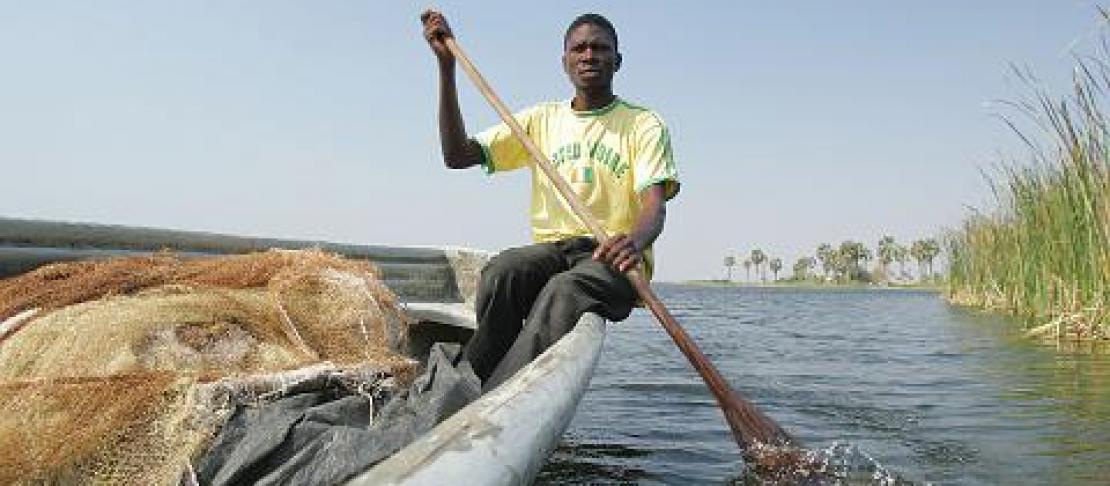If you can’t catch a fish, don’t blame the sea

On the face of it, climate change poses no great threat to fisheries globally. Our current best estimate (PDF) is that projected climatic trends will result in no more than 1% change in the worldwide catch by 2050 – though with important differences among species and regions. Fisheries provide 5% of humanity’s protein and three-quarters of mega-cities are by the sea. These figures will only grow in coming years. So can we pin our hopes on fisheries as the future provider of global food security?
A recent thinkpiece by Jake Rice and Serge Garcia, Fisheries, food security, climate change, and biodiversity: characteristics of the sector and perspectives on emerging issues, argues that the answer to this question lies as much in land-based agriculture as in aquatic productivity. Crop systems are very sensitive to climate change. Their future shortcomings in meeting our food needs will put roughly 50% more demand on fisheries by 2050, the authors calculate, assuming plausible trends in demography and greenhouse gas emissions.
Anthropogenic pressures on fisheries – overfishing, pollution, destruction of mangroves that provide breeding grounds for many species – are already severe. Outright collapses include Peru’s anchovy industry in the 1970s and Canada’s cod in the 1990s. A persistent underlying cause is the lack of coordination, despite effort on both sides, between the policy arenas of biodiversity and fishery management. Rice and Garcia highlight several of the inconsistencies between global agreements on marine conservation and the practices that will best enable food-insecure people to eat from the sea. For example, the most productive areas are naturally most in demand for fisheries, but productivity is also one of the seven criteria for identifying areas of greatest conservation value under the Convention on Biological Diversity.
With climate change as an indirect but major additional threat, what are the prospects for greater policy coherence and global sustainability in fisheries? Rice and Garcia enumerate the most promising strategies on the table, emphasising that each biodiversity-centred strategy comes at some cost to food security, and vice versa. Aquaculture, whether inland or at sea (“mariculture”), is growing fast and will certainly play a major role in future food security. Expansion of aquaculture using input-efficient management techniques and local herbivorous species (to reduce the need for fishmeal from the sea) could meet both biodiversity and food security objectives. The authors do not return to the impacts of climate change (PDF) on the various proposed strategies; inland aquaculture, unfortunately, will probably be susceptible to increasing frequency and severity of extreme events such as droughts and floods.
Now that at least some climate change is underway and unavoidable, the baselines for conservation are moving, in the authors’ words, “from behind us to in front of us”. The baselines must surely shift too for global food security, as society struggles towards a price on food that reflects its true costs to biodiversity and the environment – but is somehow affordable to our less wealthy urban and rural communities.
Links:
- Cheung, W.W. L., Lam, V.W. Y., Sarmiento, J. L., Kearney, K., Watson, R., Zeller, D. and Pauly, D. 2010. Large-scale redistribution of maximum catch potential in the global ocean under climate change. Global Change Biology 16: 24–35. DOI: 10.1111/j.1365-2486.2009.01995.x (PDF).
- Rice, J. and Garcia, G. 2011. Fisheries, food security, climate change, and biodiversity: characteristics of the sector and perspectives on emerging issues. ICES Journal of Marine Science 68: 1343–1353. DOI: 10.1093/icesjms/fsr041
- Special issue on fisheries and climate change. ICES Journal of Marine Science, Volume 68 Issue 9 September 2011.
- Scientists Eye "Windows of Opportunity" for Adapting Food Crops To Climate Change in the Next Two Decades - CCAFS Press Release, 3 October 2011
- Shyam Singh Yadav, Robert Redden, Jerry L. Hatfield, Hermann Lotze-Campen, Anthony Hall (eds). 2011. Crop Adaptation to Climate Change.
- For marine systems, see for example Brander, K. 2010. Impacts of climate change on fisheries. Journal of Marine Systems 79: 389–402. DOI: 10.1016/j.jmarsys.2008.12.015. (PDF).
This blog is the October installation of AgClim Letters, a monthly e-bulletin on science and policy written by Sonja Vermeulen, Head of Research for CCAFS. Sign up to receive AgClim Letters bulletin. Your comments are welcome below.